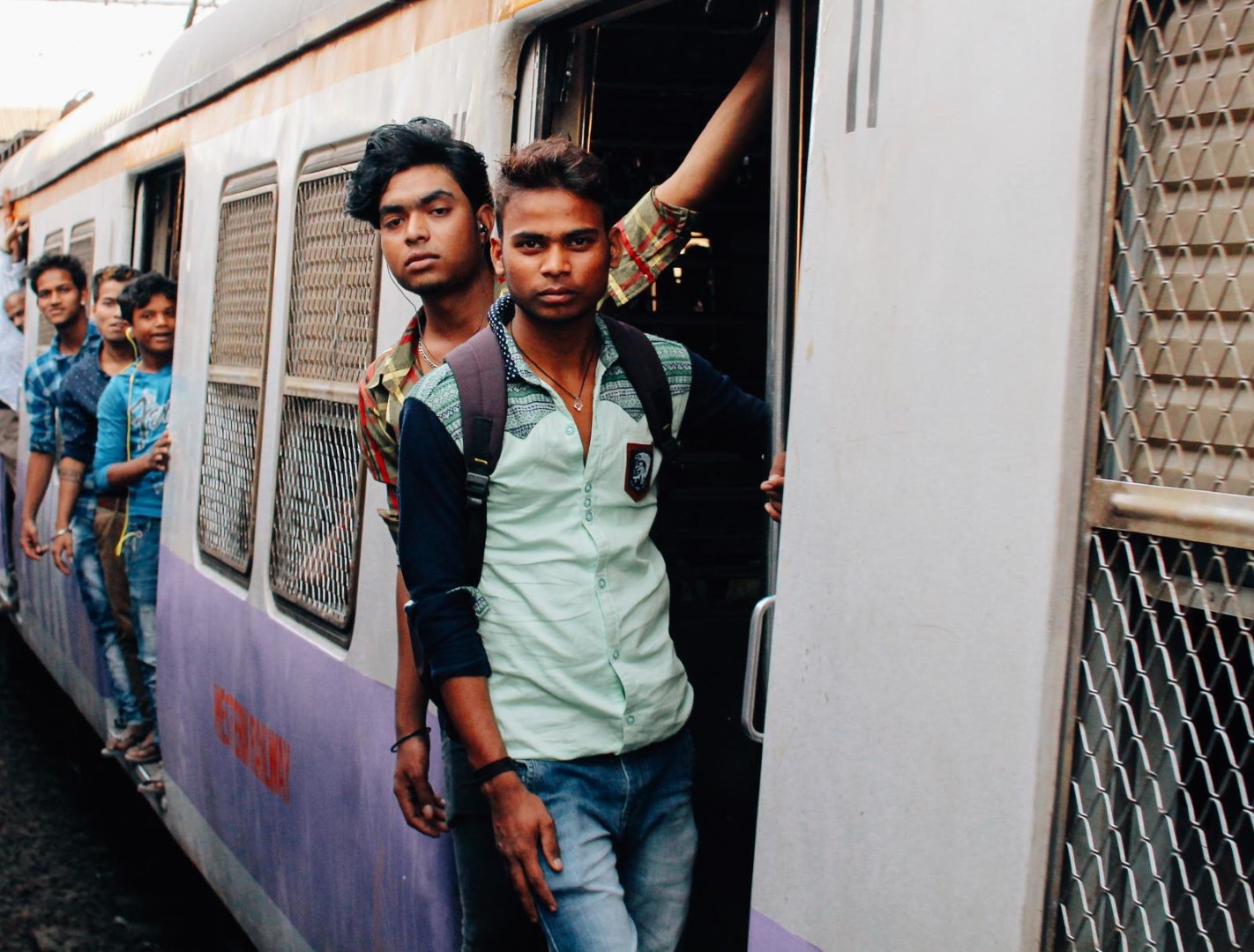
Nestled along the Arabian Sea, Mumbai, India’s bustling metropolis, epitomizes the juxtaposition of extremes – wealth and poverty, tradition and modernity, chaos and serenity. Let’s delve into the intricate fabric of Mumbai’s urban landscape, exploring its intricate strain network, burgeoning subway system, economic disparities, and cinematic allure, while drawing comparisons with Delhi, Kolkata, and New York City.

Subway Cars built in China with Funds Loaned from Japan
At the heart of Mumbai’s bustling streets lies its lifeline – the intricate train network, affectionately known as the “Mumbai locals.” These overcrowded trains crisscross the city, ferrying millions of commuters to their destinations every day. The strain network is not merely a mode of transportation but a symbol of Mumbai’s resilience and vitality. Despite its challenges, including overcrowding and safety concerns, the strain network remains indispensable, connecting people from all walks of life and serving as a testament to Mumbai’s spirit of endurance.
In recent years, Mumbai has embarked on a transformative journey with the introduction of its new subway system, the Mumbai Metro. Designed to alleviate congestion and provide faster, more efficient transportation options, the Mumbai Metro represents a bold step towards modernizing the city’s infrastructure. With its sleek design and state-of-the-art facilities, the Mumbai Metro is reshaping the urban landscape, offering commuters a comfortable and convenient alternative to the traditional strain network.

Stark Disparities Between Rich and Poor
However, Mumbai’s story is not just one of progress and prosperity. The city’s economic landscape is marked by stark disparities between the rich and the poor. On one hand, Mumbai boasts a glittering skyline dotted with luxury high-rises, corporate headquarters, and extravagant malls, symbolizing the aspirations of India’s burgeoning middle class and elite. On the other hand, sprawling slums and makeshift dwellings dot the city’s peripheries, home to millions of impoverished residents struggling to make ends meet.
The juxtaposition of wealth and poverty is perhaps best exemplified in the iconic film “Slumdog Millionaire,” which was shot on location in Mumbai. The film vividly captures the city’s vibrant street life, bustling markets, and sprawling slums, offering a glimpse into the lives of its diverse inhabitants. “Slumdog Millionaire” serves as a poignant reminder of Mumbai’s complex social fabric, where dreams and despair coexist amidst the chaos of everyday life.

Comparisons between Mumbai and other Indian cities, such as Delhi and Kolkata, offer further insights into the country’s urban landscape. Delhi, India’s capital, is renowned for its rich history, political significance, and expansive boulevards. Kolkata, on the other hand, exudes a distinct cultural charm, with its colonial architecture, literary heritage, and bustling street markets. While each city has its unique character and challenges, Mumbai stands out for its relentless energy, entrepreneurial spirit, and unparalleled diversity.
Mumbai from A to Z
- Aspirational – Mumbai attracts migrants from across India seeking opportunities, making it a city of dreams and ambition.
- Chaotic – The traffic, crowds and pace of life in Mumbai can feel chaotic and overwhelming at times.
- Contrasting – Mumbai juxtaposes wealth and poverty, with gleaming skyscrapers next to sprawling slums.
- Cosmopolitan – As a global financial center, Mumbai has a diverse, international population and culture.
- Crowded – With a population of over 20 million, Mumbai is densely populated, especially in the slums and informal settlements.
- Diverse – The city is home to people from all backgrounds, religions and cultures, creating a rich tapestry of diversity.
- Noisy – Mumbai is one of the noisiest cities in India, with constant traffic, construction and human activity.
- Polluted – Air and noise pollution are major issues in the densely populated, industrialized city.
- Resilient – Despite the challenges, Mumbaikars are known for their grit, determination and ability to adapt.
- Vibrant – Mumbai is a lively, energetic city full of activity and color.
- Zonal – Mumbai is divided into distinct zones or areas, each with its own unique features and characteristics.
Contrasting Mumbai with global metropolises like New York City reveals both similarities and differences. Like New York City, Mumbai is a melting pot of cultures, a hub of commerce and creativity, and a magnet for ambitious individuals seeking to fulfill their dreams. However, Mumbai’s urban landscape is characterized by greater extremes of wealth and poverty, a more chaotic and congested transportation network, and a unique blend of traditional and modern architecture.
Mumbai is a city of contrasts and connections, where the old and the new, the rich and the poor, converge in a vibrant tapestry of urban life. From its intricate strain network to its burgeoning subway system, from its economic disparities to its cinematic allure, Mumbai embodies the complexities and contradictions of modern India. As the city continues to evolve and grow, it will undoubtedly remain a source of inspiration, fascination, and intrigue for generations to come.